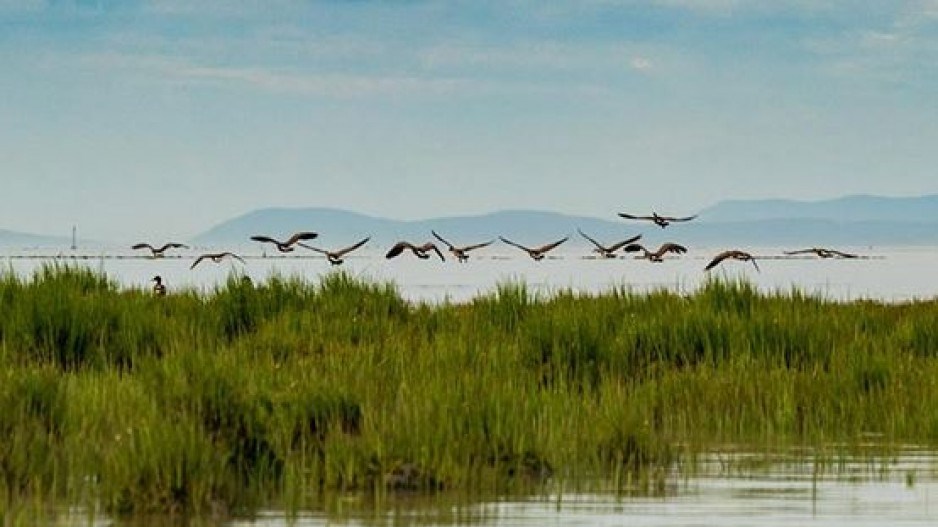More than 100 species in the Fraser River estuary could go extinct over the next 25 years, unless better habitat management, restoration and loss prevention is implemented in a more harmonized way, according to a new study led by University of BC scientists.
The species of top concern are salmon – chinook, coho, chum and sockeye – Southern Resident Killer Whales and the Western sandpiper, said Tara Martin, a professor at UBC’s Faculty of Forestry and lead author.
The study, published in the journal Conservation Science and Practice, uses a “novel” Priority Threat Management model that calculates the cost-effectiveness of conservation action and governance.
“This study underscores that biodiversity conservation in heavily urbanized areas is not a lost cause but does require strategic planning, attention to governance, and large‐scale investment,” the study concludes.
About 15% of the species at risk of extinction is fish. Since so many other species rely on them as a key part of their diets – from killer whales to eagles – salmon is the number one concern.
A number of genetically distinct salmon populations in the Fraser River system have already disappeared, and others, like Cultus Lake sockeye, are likely past the point of saving.
Climate change may be the main threat for southern range Pacific salmon. But Martin said habitat loss is also a significant contributing factor. She sites Boundary Bay as one example.
“For, say, Boundary Bay chinook populations, 95% of their former floodplain habitat and stream habitat is no longer there,” Martin said. “That’s a result of converting streams on the floodplain – so dyking and dredging of the floodplain - and then, in terms of the streams, it’s culverts and floodgates and dams.”
The majority of the culverts are simply not “salmon friendly” she said. Those culverts can be improved, she said. But there needs to be one over-arching act and body to look after the estuary.
The challenge for estuaries is two-fold. Most of the world's biggest cities are located in coastal areas, the paper points out, with 70% built on estuaries.
“As a result, estuaries, which are among the most productive and dynamic environments in the world, are also most at risk due to the complex nature of multiple threats and competing interests,” the paper notes.
Another problem, however, is the lack of a single act and management body that represents three levels of government – federal, provincial and First Nation – specifically for the Fraser River estuary.
The estimated cost of preventing the extinction of fish, birds, mammals, amphibians and plants in the Fraser River estuary is surprisingly small.
The paper calls for $381 million investment over 25 years to develop a new act and co-management system to address things like habitat loss. That’s about $15 million a year.
Moreover, there are many pots of money available for things like habitat restoration, Martin said – it just needs to be dedicated and overseen by a single coordinating entity, one with legislative teeth.
Estuaries “fall through the cracks” of federal and provincial legislation, Martin said, because while the federal government is responsible for the marine environment, the province is responsible for lands, including foreshores.
“In terms of jurisdiction, estuaries fall in the cracks,” she said.
A prototype of a singled governing body was the Fraser River Estuary Management Planning Group, which was dissolved several years ago.
Martin is recommending a new Fraser River Estuary Act and governance body that would include three levels of government to provide a more harmonized approach to habitat and species protection in the Fraser River Estuary.
“Not only do we need to implement a whole bunch of management strategies, but in order for them to be successful, we need to have a governance body which is dedicated to the implementation of those strategies, because at the moment there’s nothing,” Martin said.
“We need something like a Fraser River Estuary Act -- something with legislative clout which provides this body with the means to oversee the implementation of actions for species recovery.”




